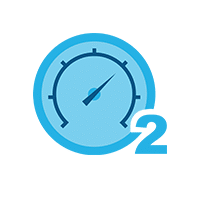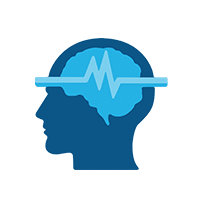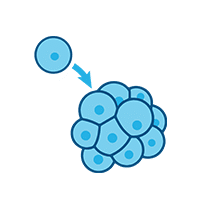Peripheral Neuropathy
Peripheral Neuropathy, also called Nerve Pain or Neuropathic Pain (NP) is characterized by feelings of numbness, uncomfortable tingling, burning or coldness, and/or itchiness mainly in the hands and feet(1). There are many things that can cause NP, including metabolic issues (diabetes is the most common cause), physical injuries, infections, autoimmune issues (i.e. multiple sclerosis) and neurological issues(1). Current treatments focus on relieving pain through drug therapies, but these have limited efficacy and dose-limiting toxic effects.
Extivita Therapies for Peripheral Neuropathy:
Extivita Therapies Neuropathic Pain Recovery:

Hyperbaric Oxygen Therapy

Neurofeedback

Supplements

Nutritional IV Therapy

Pulsed Electromagnetic Field Therapy
Hyperbaric Oxygen Therapy for Peripheral Neuropathy:

Hyperbaric oxygen therapy (HBOT) may relieve symptoms of peripheral neuropathy (NP) by reducing inflammatory damage and stimulating new nerve and blood vessel growth(2). Nerve damage in NP causes inflammation in the surrounding neurons and non-neural cells(3). HBOT can combat the damage that such inflammation causes by significantly reducing pro- inflammatory markers, increasing oxygen supply, and stimulating the growth of new blood vessels(4).
Additionally, HBOT can stimulate the growth of new nerve cells by increasing the availability and proliferation of stem cells, positively effecting vascular and nerve tissue responses(4). When combined, these effects provide relief and potential recovery from NP.
Effects of HBOT on Peripheral Neuropathy:

New Blood Vessel Formation
Hyperbaric oxygen therapy stimulates the formation of new blood vessels, healing injured tissues that were unable to get nutrients and oxygen.

Increased Stem Cell Activity

Decreased Inflammation

Neurofeedback for Peripheral Neuropathy:
Neurofeedback may relieve pain associated with Peripheral Neuropathy (NP) by safely and effectively modulating brain activity. Research has been able to isolate the locations of the brain that contribute to physical and emotional aspects of chronic pain, and neurofeedback has been able to target these areas and provide pain relief(4-6).
IV Therapy for Peripheral Neuropathy:
The Myers Cocktail, which is full of B vitamins like B12, may help Peripheral Neuropathy (NP) that is associated with nutrient deficiencies, as well as NP in patients with diabetes(7). Additionally, Vitamin C (in the Myer’s Cocktail) and Gutathione (available as a stand-alone IV) can protect your peripheral nerves against toxin damage that is common in NP(7, 8).

Pulsed Electromagnetic Field Therapy for Peripheral Neuropathy:
Pulsed Electromagnetic Field Therapy (PEMF) uses safe, low frequency signals to stimulate capillaries, resulting in countless therapeutic effects(9). One such effect is improved neural microcirculation around damaged nerves which relieves pain and reduces inflammation and further damage(9-10).
News & Research for Peripheral Neuropathy:
Florida veteran using hyperbaric oxygen therapy to treat his PTSD
Doctors and researchers with Aviv Clinics say hyperbaric oxygen therapy is showing promising results for veterans with treatment-resistant PTSD. Credit: First Coast News Retired Col. Andy Smith says HBOT therapy helped his PTSD. Dr. Elamir, a board-certified internal...
Israeli Study of IDF veterans shows oxygen therapy reduces PTSD symptoms
Clinical example of functional brain imaging by fMRI. The reduced brain activity in the frontal lobes of the brain and in hippocampus is improved after Hyperbaric Oxygen Therapy . Credit: Shamir Medical Center Israeli scientists have found that...
Hyperbaric oxygen therapy improves symptoms, brain’s microstructure and functionality in veterans with treatment resistant post-traumatic stress disorder: A prospective, randomized, controlled trial
Abstract Introduction Post-traumatic stress disorder (PTSD) is characterized by changes in both brain activity and microstructural integrity. Cumulative evidence demonstrates that hyperbaric oxygen therapy (HBOT) induces neuroplasticity and case-series studies...
References
- Ding Y, Yao P, Hong T, Han Z, Zhao B, Chen W. The NO-cGMP-PKG signal transduction pathway is involved in the analgesic effect of early hyperbaric oxygen treatment of neuropathic pain. J Headache Pain. 2017;18(1):51.
- Sanchez, E Cuauhtemoc. “Hyperbaric oxygenation in peripheral nerve repair and regeneration.” Neurological research vol. 29,2 (2007): 184-98. doi:10.1179/016164107X181824
- Li, Fenghua et al. “Hyperbaric oxygenation therapy alleviates chronic constrictive injury-induced neuropathic pain and reduces tumor necrosis factor-alpha production.” Anesthesia and analgesia vol. 113,3 (2011): 626-33. doi:10.1213/ANE.0b013e31821f9544
- Prinsloo, S., Novy, D., Driver, L., Lyle, R., Ramondetta, L., Eng, C., McQuade, J., Lopez, G. and Cohen, L. (2017), Randomized controlled trial of neurofeedback on chemotherapy‐induced peripheral neuropathy: A pilot study. Cancer, 123: 1989-1997. doi:10.1002/cncr.30649
- Bismuth, Julie et al. “Relieving peripheral neuropathic pain by increasing the power-ratio of low-β over high-β activities in the central cortical region with EEG-based neurofeedback: Study protocol for a controlled pilot trial (SMRPain study).” Neurophysiologie clinique = Clinical neurophysiology vol. 50,1 (2020): 5-20. doi:10.1016/j.neucli.2019.12.002
- Hassan, Muhammad Abul et al. “The mechanism of neurofeedback training for treatment of central neuropathic pain in paraplegia: a pilot study.” BMC neurology vol. 15 200. 13 Oct. 2015, doi:10.1186/s12883-015-0445-7
- Staff, Nathan P, and Anthony J Windebank. “Peripheral neuropathy due to vitamin deficiency, toxins, and medications.” Continuum (Minneapolis, Minn.) vol. 20,5 Peripheral Nervous System Disorders (2014): 1293-306. doi:10.1212/01.CON.0000455880.06675.5a
- Kumar, Neeraj. “Neurologic presentations of nutritional deficiencies.” Neurologic clinics vol. 28,1 (2010): 107-70. doi:10.1016/j.ncl.2009.09.006
- Gao, Yueming et al. “Changes in nerve microcirculation following peripheral nerve compression.” Neural Regeneration Research (2013): 1041–1047.
- Graak, Vinay et al. “Evaluation of the efficacy of pulsed electromagnetic field in the management of patients with diabetic polyneuropathy.” International Journal of Diabetes in Developing Countries 29 (2009): 56 – 61.




